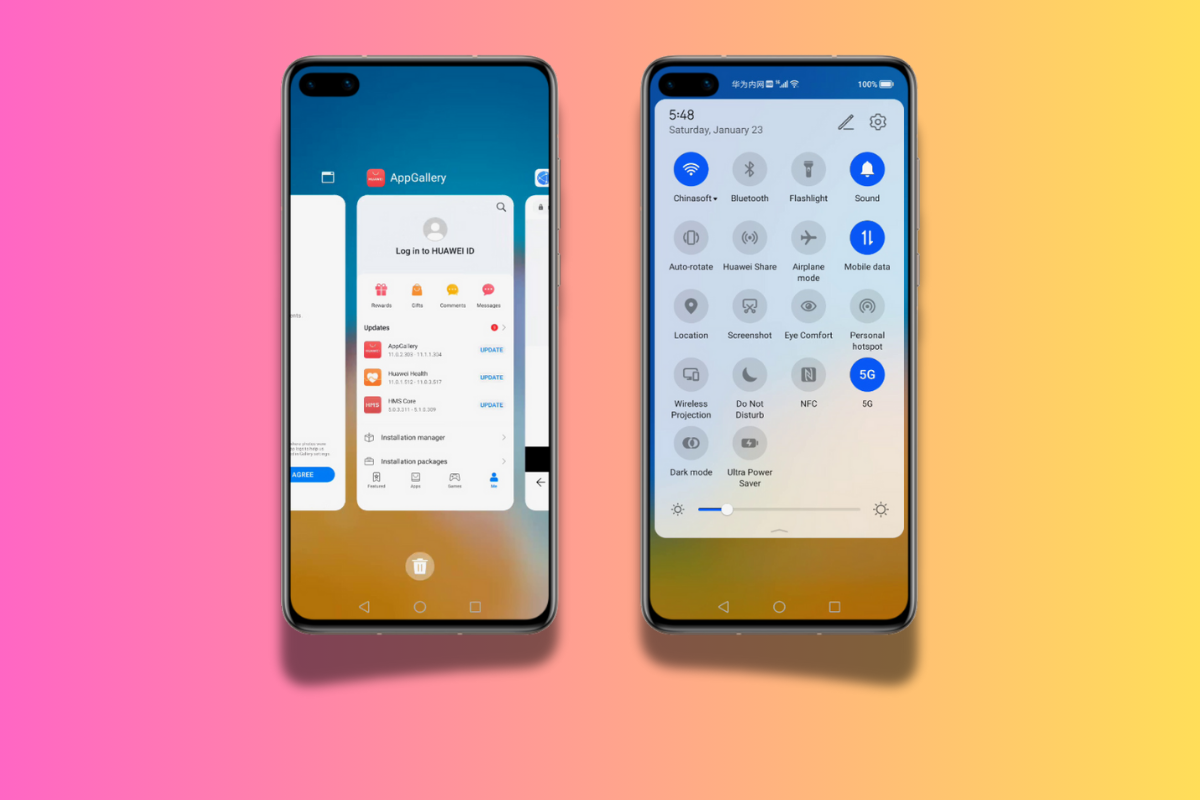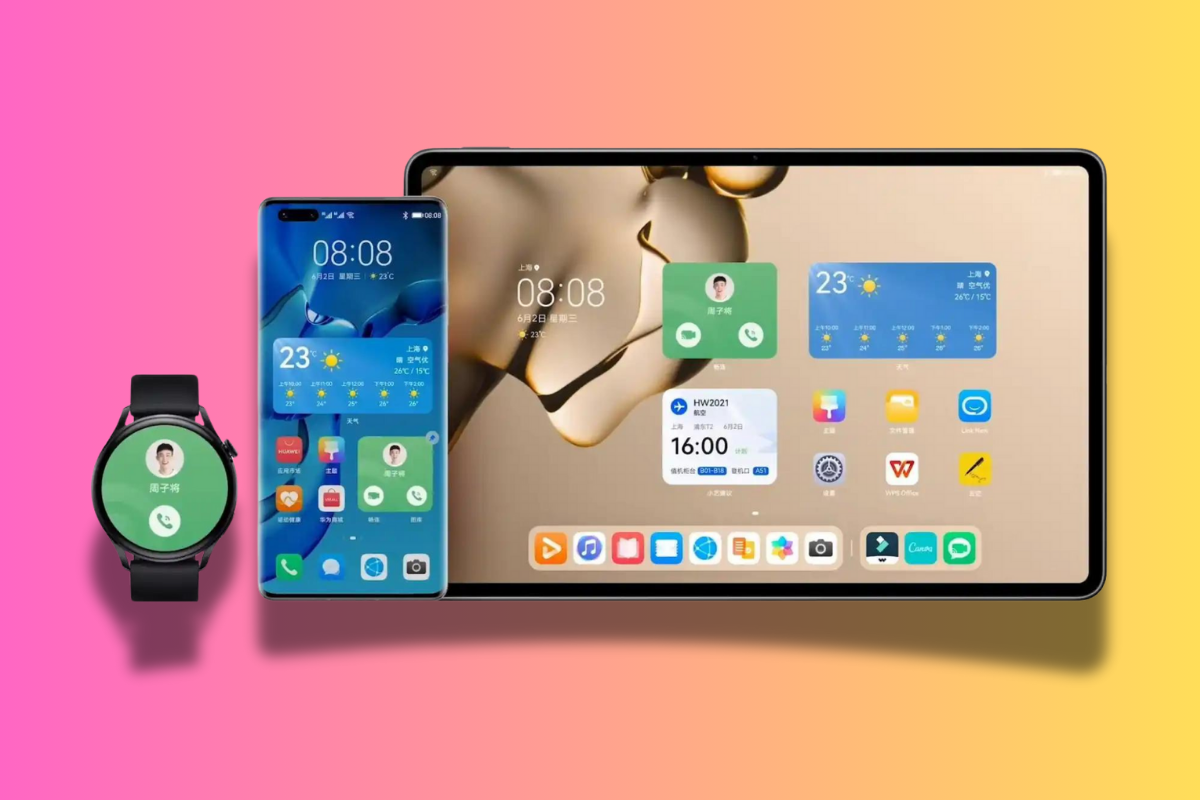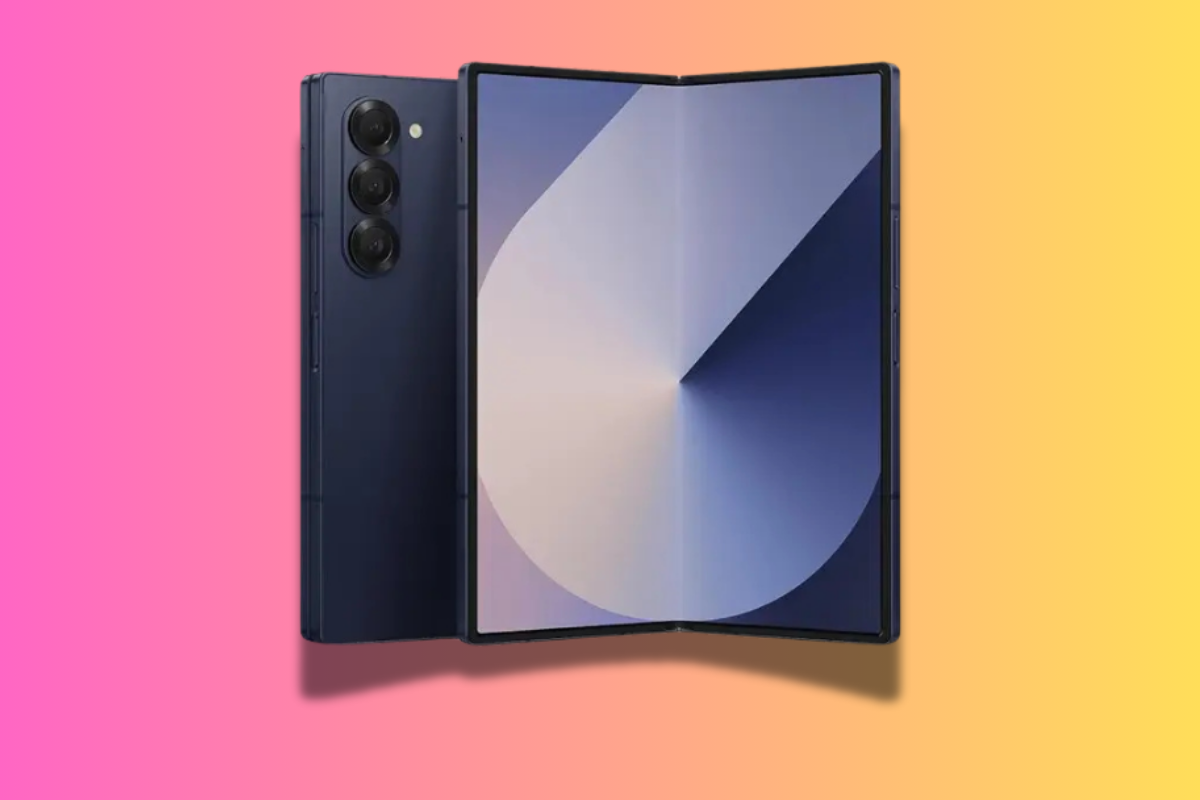Is HarmonyOS a viable alternative to Android? Here’s everything you need to know about Huawei’s open-source mobile operating system, including its core features, the latest build, and its pros and cons…
TL;DR: What is HarmonyOS?
Huawei’s HarmonyOS, or HongMeng OS, is a microkernel-based system designed for a seamless experience across smartphones, tablets, wearables, smart TVs, and IoT devices.
Key Features / What You Need To Know:
🌐 Distributed OS: HarmonyOS connects Huawei devices seamlessly across smartphones, tablets, wearables, and IoT gadgets.
🔒 Secure & Efficient: Built on a microkernel for enhanced security and smooth performance.
📱 Super Device Feature: Enables easy cross-device collaboration for a unified experience.
🚫 App Gap: Lacks Google services like Gmail, YouTube, and Play Store due to US sanctions.
🌍 Limited Appeal Outside China: Adoption is slow globally, with the app ecosystem still growing.
⚙️ Developer-Friendly: Supports multiple programming languages but still has a learning curve for some.
Verdict: Great for Huawei users, but the lack of Google apps makes it hard to recommend outside of China.
Huawei’s HarmonyOS, also known as HongMeng OS, is a microkernel-based operating system that aims to provide a seamless user experience across smartphones, tablets, wearables, smart TVs, and even IoT devices.
It was launched in August 2019, and while its ambition is clear, the question remains: Can HarmonyOS truly compete with Android and iOS?
Here’s a broad overview of what HarmonyOS is, how it works in practice, how it compares to Android, and its PROS and CONS as an operating system…
Key Features of HarmonyOS
🌐 Distributed OS
The standout feature of HarmonyOS is its distributed architecture, which enables seamless integration across various Huawei devices.
It’s designed to allow apps to run across different devices without requiring significant modifications. Imagine starting a task on your phone and completing it on your smart TV or tablet without any interruptions—HarmonyOS makes this possible.
🔑 Microkernel Architecture
Unlike Android’s monolithic kernel, HarmonyOS uses a microkernel design. This means that most system services operate outside the kernel, which improves security and performance by reducing the attack surface. This makes HarmonyOS one of the more secure operating systems available today.
📊 Deterministic Latency Engine
HarmonyOS’s Deterministic Latency Engine optimizes task scheduling, cutting response latency by 25.7%. This feature ensures that apps run smoother and more efficiently compared to traditional systems.
🖥️ Multi-Device Collaboration
The Super Device concept allows HarmonyOS users to link their devices in a unified ecosystem. Whether it’s screen mirroring, resource sharing, or managing tasks across multiple platforms, HarmonyOS enables an interconnected experience. It’s a step up from Android in terms of cross-device collaboration, which has been a long-standing issue for Google’s OS.
🔒 Enhanced Security
HarmonyOS employs Trusted Execution Environment (TEE) to enhance security and uses formal verification methods to validate the correctness of its system. This makes HarmonyOS an appealing choice for users who prioritize security.
Where HarmonyOS Shines

Unified Experience Across Devices
HarmonyOS is designed to be versatile. It’s not just a smartphone OS—Huawei envisions it powering everything from wearables to smart home devices. This “one OS for everything” approach could redefine how devices interact in a smart ecosystem.
Performance Optimizations
With features like GPU Turbo and Link Turbo, HarmonyOS enhances performance for tasks like gaming and browsing. Its microkernel architecture also allows for smoother operation on low-power devices like wearables, ensuring efficiency across the board.
Security First
Huawei has placed a huge emphasis on security with HarmonyOS. The microkernel architecture, combined with TEE, gives the OS a higher level of security than traditional systems like Android. Users who prioritize privacy may find this a compelling reason to explore HarmonyOS.
Developer-Friendly
HarmonyOS supports multiple programming languages—Java, C/C++, JavaScript, Kotlin, Swift, and Dart—making it easier for developers to create apps that scale across different devices. This adaptability could attract more developers in the future, but for now, the app ecosystem remains a challenge.
Drawbacks and Challenges

🚫 Limited App Ecosystem
One of HarmonyOS’s biggest hurdles is its limited app ecosystem. HarmonyOS relies on Huawei Mobile Services (HMS) instead of Google Mobile Services (GMS), meaning users don’t get access to core apps like Gmail, YouTube, and Google Play Store. Huawei’s AppGallery is growing, but it’s nowhere near as expansive as Google’s ecosystem.
📉 Adoption Outside China
Due to US sanctions, HarmonyOS is primarily available in China, and its global adoption remains unclear. Without support from Google and other Western services, it’s difficult for HarmonyOS to gain traction in markets where users rely heavily on Google’s ecosystem.
⚙️ Sideloading Google Apps
While there are ways to sideload Google apps on HarmonyOS, the process is long-winded and comes with risks—security vulnerabilities, unreliable performance, and potential bans from Huawei’s platform. This makes HarmonyOS less appealing to users outside China who are accustomed to the seamless integration of Google services.
📱 Limited Market Appeal
HarmonyOS has its strengths, especially for users invested in Huawei’s ecosystem. However, its lack of access to global apps and services means it’s unlikely to replace Android or iOS as a mainstream mobile OS, at least for the foreseeable future.
Is HarmonyOS Worth Switching To?
If you’re deep into Huawei’s ecosystem and use multiple devices like their smartphones, tablets, and wearables, HarmonyOS could offer a seamless experience that Android or iOS can’t match. The Super Device feature, enhanced cross-device collaboration, and its focus on security and performance are appealing.
However, for most users—especially outside of China—the lack of Google services remains a dealbreaker. Without Google Play, YouTube, Gmail, and other essential apps, HarmonyOS is at a significant disadvantage. Even with the impressive technical foundation, this app gap makes it hard to recommend as a primary OS for most people.
The Future of HarmonyOS

From a technical perspective, HarmonyOS is ambitious and innovative, offering features that Android and iOS are only just catching up with, like dynamic interfaces and cross-device interaction.
However, its future depends heavily on political developments and Huawei’s ability to grow its AppGallery into a viable alternative to Google Play.
If US sanctions were lifted and Google services became available on HarmonyOS, it could potentially challenge Android in markets outside China. Until then, it’s more of a niche operating system that appeals mainly to Huawei loyalists.
HarmonyOS FAQs
Can HarmonyOS run Android apps?
Yes, HarmonyOS 4 supports Android apps through its Android runtime environment, but it also encourages developers to create native HarmonyOS apps for better performance.
How does cross-device integration work in HarmonyOS?
The Super Device feature allows seamless connectivity and collaboration between Huawei devices, enabling resource sharing and task management across phones, tablets, and smart TVs.
What are the UI differences between HarmonyOS and Android?
HarmonyOS 4 introduces a Dynamic Island Style UI and Live Windows Multitasking, creating a more personalized and engaging user experience compared to the traditional Android interface.
Bottom Line?
HarmonyOS is a bold step forward for Huawei, offering unique features like cross-device collaboration, a microkernel architecture, and strong security.
While it’s unlikely to overtake Android or iOS globally, especially with its limited app ecosystem, it presents an exciting alternative for those invested in Huawei’s growing ecosystem.
For now, though, Google Play and its services remain crucial, making HarmonyOS a tough sell for users outside of China.

